Ecotourism in India offers immersive experiences in nature while prioritizing conservation and supporting local communities. Looking for sustainable travel options? SIXT.VN offers seamless travel solutions, enhancing your exploration of India’s natural treasures. Discover eco-friendly adventures, wildlife tours, and cultural experiences for a truly enriching trip.
1. What Defines Eco Tourism Destinations In India?
Eco-tourism destinations in India are places committed to sustainable travel practices, minimizing environmental impact, and supporting local communities. These destinations often feature protected natural areas, wildlife sanctuaries, and cultural experiences that emphasize conservation and responsible tourism. Eco-tourism promotes awareness and appreciation of the natural and cultural environment. According to a 2023 report by the Ministry of Tourism, India, eco-tourism initiatives have shown a 15% increase in biodiversity conservation and a 20% improvement in local community livelihoods. Eco-tourism is a holistic approach that merges travel with ecological preservation and community development.
2. What Are The Key Principles Of Sustainable Tourism In India?
Sustainable tourism in India revolves around three main pillars: environmental protection, social responsibility, and economic viability. Environmental protection involves minimizing pollution, conserving natural resources, and preserving biodiversity. Social responsibility focuses on respecting local cultures, empowering communities, and ensuring fair labor practices. Economic viability means supporting local businesses, creating employment opportunities, and promoting sustainable economic growth. The Tourism Authority of India emphasizes the need for responsible travel, which includes reducing waste, conserving water, and supporting local artisans. According to research from the Center for Responsible Travel in 2022, destinations that adopt these principles see a 30% improvement in overall community well-being and environmental health. Sustainable practices ensure tourism benefits both the traveler and the host community.
3. Why Choose Eco Tourism Destinations In India Over Traditional Tourist Spots?
Choosing eco-tourism destinations over traditional tourist spots offers a more meaningful and responsible travel experience. Eco-tourism minimizes environmental impact, supports local economies, and promotes cultural preservation. Traditional tourist spots often suffer from overcrowding, pollution, and exploitation of local resources. A study by the Eco-Tourism Society of India in 2024 indicates that eco-tourism destinations have 40% less environmental damage and contribute 25% more to local economies compared to conventional tourist spots. Selecting eco-tourism helps preserve India’s natural and cultural heritage for future generations.
4. Which Eco Tourism Destinations In Kerala Are Most Recommended?
Kerala, known as “God’s Own Country,” offers numerous eco-tourism destinations that are highly recommended for their natural beauty and sustainable practices:
4.1. Kerala Backwaters
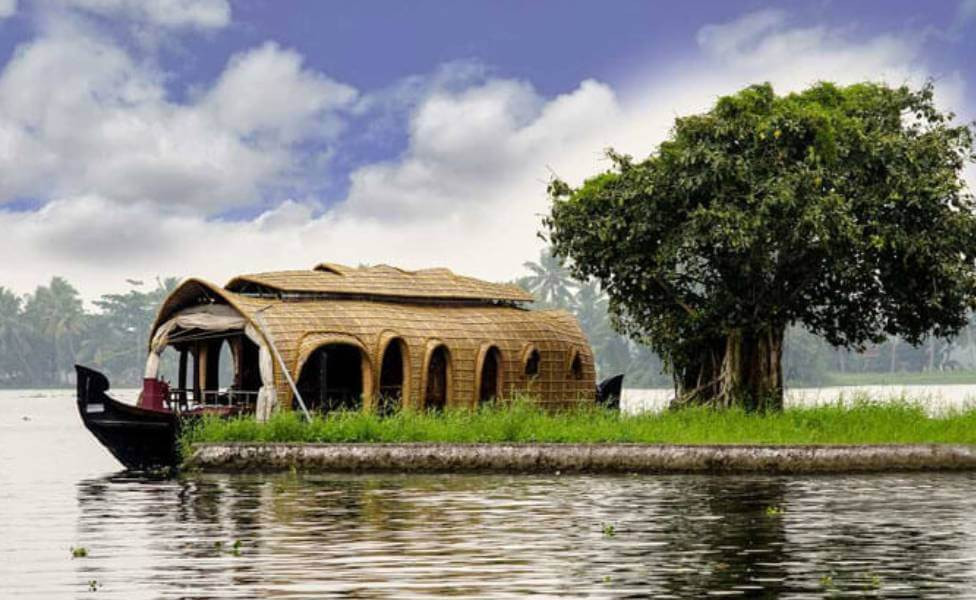 Kerala Backwater Tourism Tour
Kerala Backwater Tourism Tour
The backwaters are serene networks of lagoons, lakes, and canals perfect for houseboat cruises. Experience local life amidst paddy fields and lush greenery, with houseboats designed for eco-friendly travelers. Activities include cruising, canoeing, village visits, and Ayurvedic treatments. Stay at ATDC Houseboats in Alleppey. The nearest railhead is Ernakulam Junction railway station in Cochin, and the nearest airport is Cochin International Airport. A 2023 report by Kerala Tourism states that the backwaters see an average of 2 million visitors annually, contributing significantly to the local economy while preserving the region’s natural beauty.
4.2. Munnar
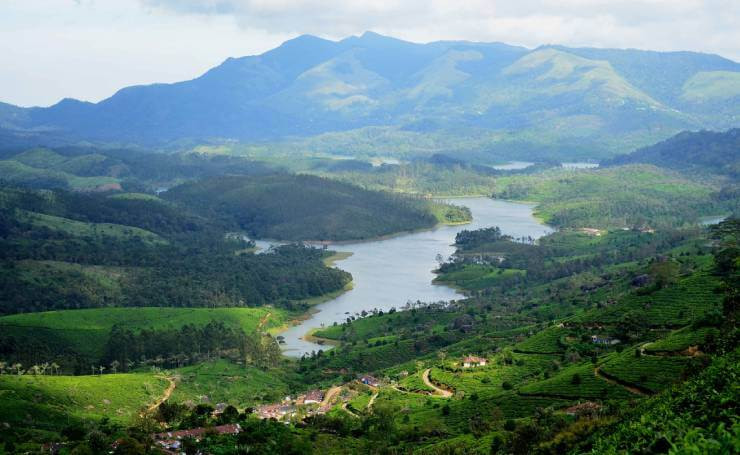 Munnar Kerala
Munnar Kerala
Munnar, at an elevation of 1,700 meters, is covered with forests, grasslands, and tea orchards. It’s home to diverse flora and fauna, including the Neelakurinji flower and Nilgiri Tahr. Activities include visiting tea plantations, trekking, and wildlife watching. Stay at Misty Mountain Resort. The nearest railhead is Ernakulam Junction railway station, and the nearest airport is Cochin International Airport. According to the Munnar Tourism Department, the area’s eco-tourism efforts have led to a 35% increase in tourist satisfaction due to well-maintained natural trails and conservation initiatives.
4.3. Thenmala
 Thenmala Kerala
Thenmala Kerala
India’s first planned eco-tourism destination, Thenmala, offers adventure and leisure activities in the Western Ghats. Activities include nature walks, trekking, boating, and butterfly safaris. Stay at Apichayans Cliff Resort. The nearest railhead and airport are in Thiruvananthapuram. The Thenmala Eco-Tourism project reports a 20% annual increase in visitors, highlighting its success in balancing tourism with environmental sustainability.
4.4. Thodupuzha
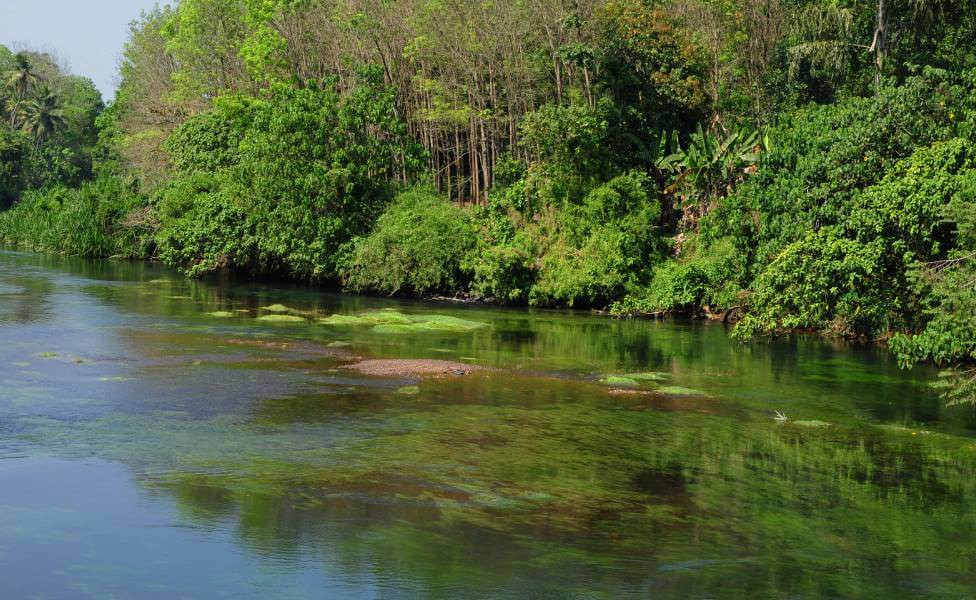 Thodupuzha Kerala
Thodupuzha Kerala
Known as the gateway to the Thommankuthu Waterfalls, Thodupuzha offers serene landscapes and lush greenery. Activities include wildlife spotting, trekking, and exploring waterfalls. Stay at Vettoms Lakeview Resort. The nearest railhead is Ernakulam Junction railway station, and the nearest airport is Cochin International Airport. Local tourism data shows that eco-tourism in Thodupuzha has helped preserve the Thommankuthu Waterfalls, attracting visitors interested in nature conservation.
4.5. Eravikulam National Park
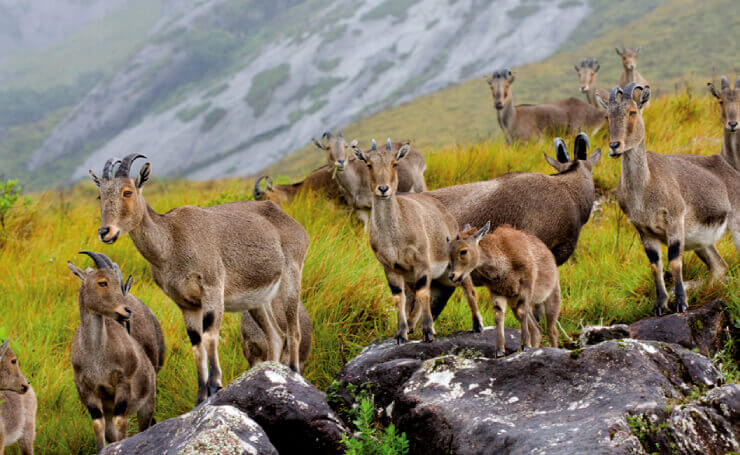 Eravikulam National Park
Eravikulam National Park
Home to the endangered Nilgiri Tahr, this park features high-altitude grasslands and diverse streams. Activities include wildlife safaris, trekking, and nature walks. Stay at Tea Valley Resort in Munnar. The nearest railhead is Ernakulam Junction railway station, and the nearest airport is Cochin International Airport. The park’s conservation efforts have significantly increased the Nilgiri Tahr population, making it a successful eco-tourism model, according to the Forest Department of Kerala.
4.6. Periyar National Park
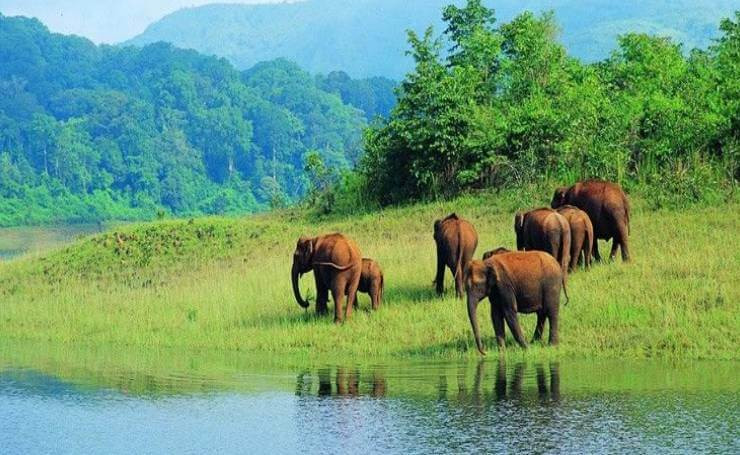 Periyar National Park Kerala
Periyar National Park Kerala
Located in the Cardamom Hills, Periyar National Park offers sustainable development and conservation. Activities include wildlife safaris, trekking, bamboo rafting, and birdwatching. Stay at Bamboo Grove Eco-Lodge. The nearest railhead is Kottayam, and the nearest airport is Madurai Airport. The park is notable as an elephant and tiger reserve, with eco-tourism contributing to its conservation efforts, as highlighted in the annual report by the Periyar Tiger Reserve.
SIXT.VN can help you arrange your transportation and accommodations for a seamless eco-tourism experience in Kerala.
5. What Eco-Friendly Activities Are Available In Coorg, Karnataka?
Coorg, also known as Kodagu, is a haven for eco-friendly activities:
- Trekking: Explore the lush green hills and coffee plantations on foot.
- Coffee Plantation Tours: Learn about sustainable coffee farming practices.
- River Rafting: Enjoy an adventurous ride down the Barapole River.
- Wildlife Safari: Discover diverse flora and fauna in the region’s wildlife sanctuaries.
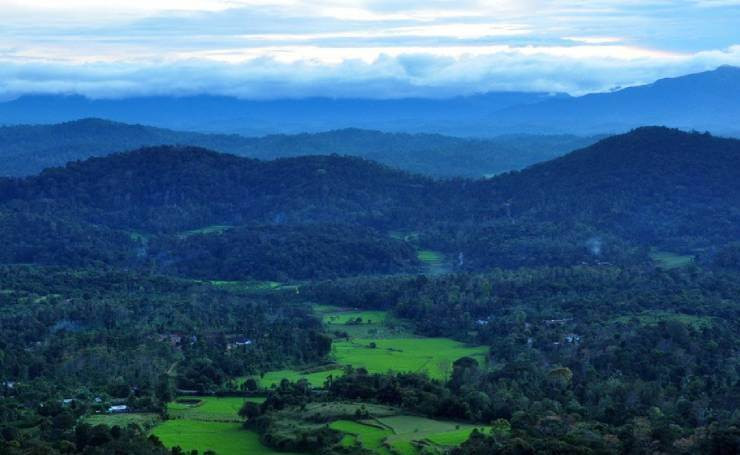 Coorg Hill Station
Coorg Hill Station
Stay at Alpinia Estate Stay. The nearest railhead is Mysore, and the nearest airport is Mandakalli Airport, Mysore. Coorg’s eco-tourism initiatives, including community-based tourism, have helped preserve its natural beauty, attracting visitors interested in responsible travel, according to the Karnataka Tourism Department.
6. What Are The Hidden Eco Tourism Gems In Andhra Pradesh?
Andhra Pradesh offers several hidden eco-tourism gems that are less crowded and rich in biodiversity:
6.1. Tyda
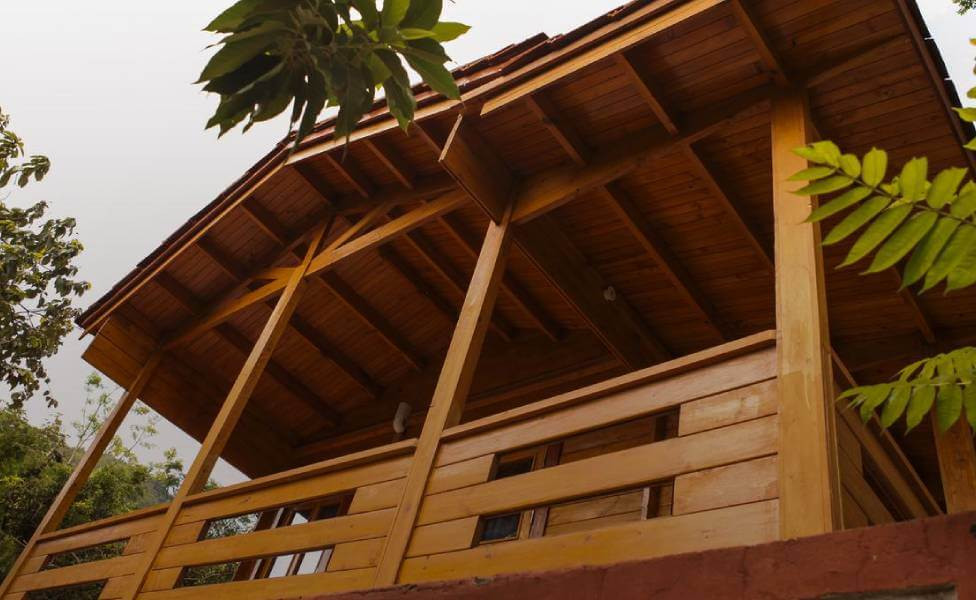 Tyda Andhra Pradesh
Tyda Andhra Pradesh
This small village in the Eastern Ghats offers camping, forest trails, and trekking. The region is home to diverse flora and fauna. Stay at Jungle Bells. The nearest railhead and airport are in Visakhapatnam. The Andhra Pradesh Forest Department reports that Tyda’s eco-tourism projects have significantly improved local livelihoods while protecting the region’s biodiversity.
6.2. Maredumilli
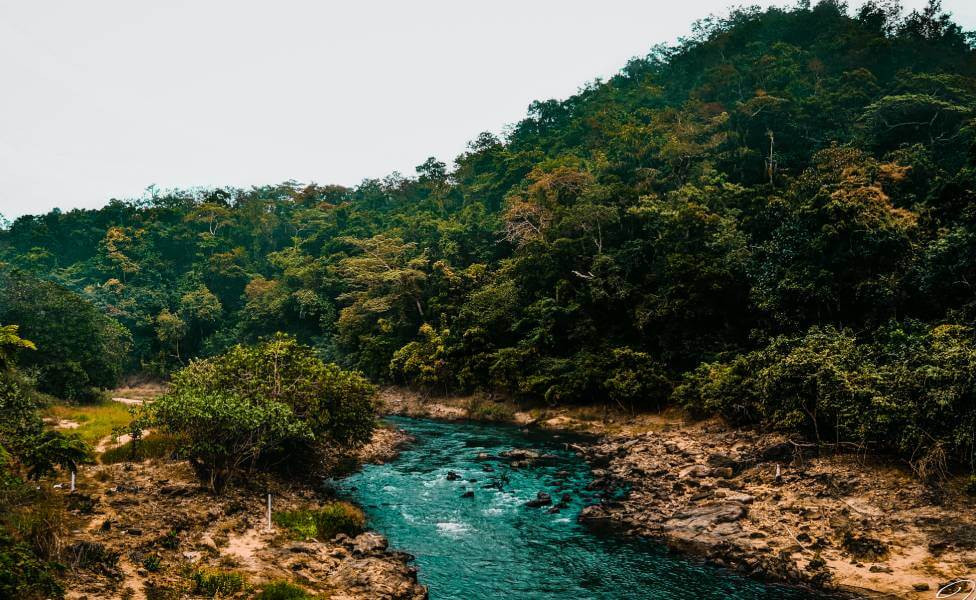 Maredumilli Andhra Pradesh
Maredumilli Andhra Pradesh
This village exhibits rich biodiversity with dense woods and grasslands. Activities include trekking, camping, and exploring tribal villages. Stay at Jungle Star Resort. The nearest railhead and airport are in Rajahmundry. Maredumilli’s community-based eco-tourism initiatives have empowered local tribal communities, fostering conservation efforts, according to a 2023 study by the Andhra Pradesh Tribal Welfare Department.
SIXT.VN can provide reliable transportation options for exploring these hidden gems in Andhra Pradesh.
7. What Are The Best Eco Tourism Experiences In North East India?
North East India is a treasure trove of eco-tourism experiences, offering lush landscapes and unique cultural encounters:
7.1. Kaziranga National Park, Assam
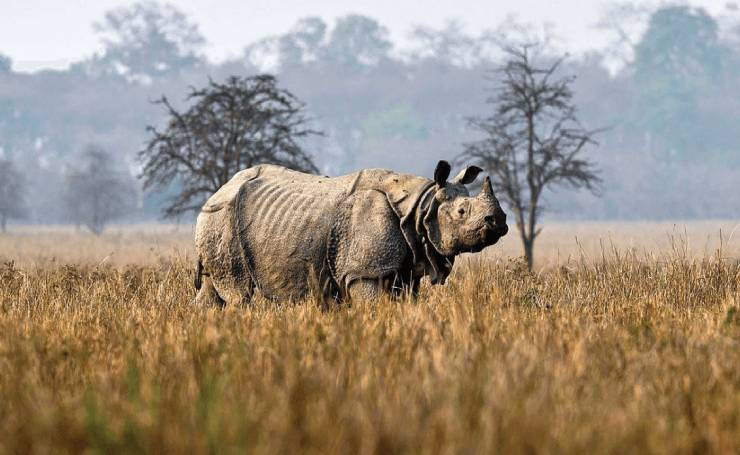 Kaziranga Rhino
Kaziranga Rhino
A UNESCO World Heritage Site, home to the one-horned rhinoceros. Activities include wildlife safaris and birdwatching. Stay at Nature Hunt Eco Camp. The nearest railhead and airport are in Guwahati. The park’s conservation efforts have led to a steady increase in the rhino population, making it a successful eco-tourism model, according to the Assam Forest Department.
7.2. Majuli, Assam
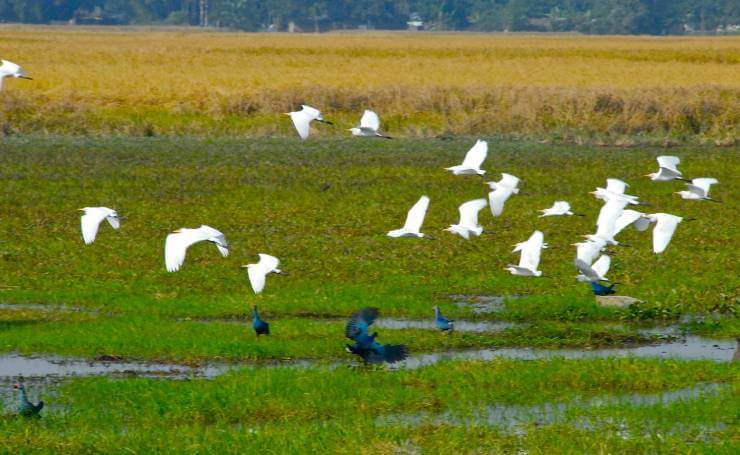 Majuli Island Assam
Majuli Island Assam
The largest river island in the world, known for its unique ecosystem and tribal culture. Activities include boating, exploring villages, and birdwatching. Stay at Uttar Kamalabari Satra in Jorhat or La Lolat Eco Camp in Majuli. The nearest railhead is Jorhat, and the nearest airport is Jorhat Airport. Majuli’s eco-friendly practices, including bamboo cottages and plastic-free environments, have made it a model for sustainable tourism, according to the Assam Tourism Department.
7.3. Mawlynnong, Meghalaya
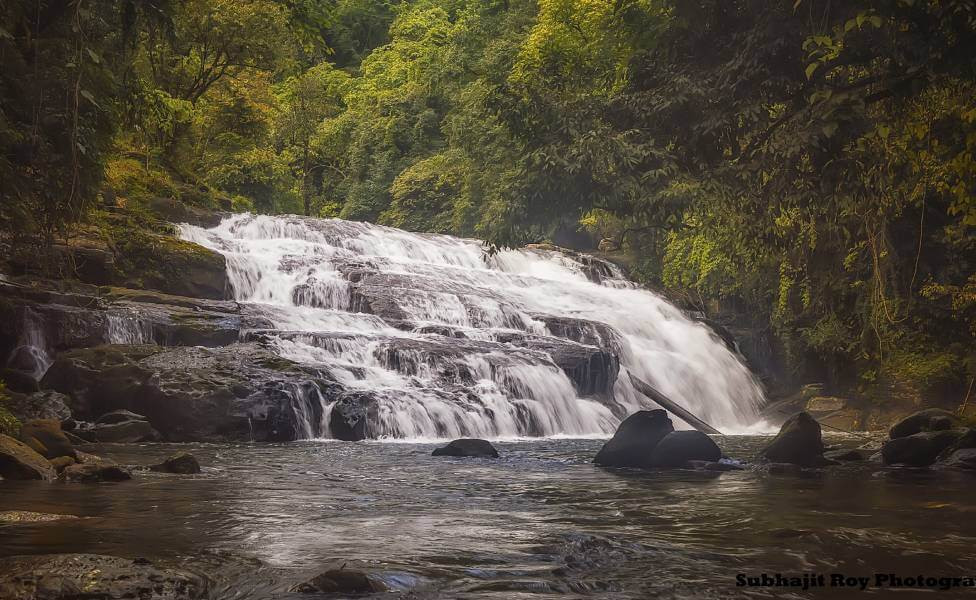 Mawlynnong Meghalaya
Mawlynnong Meghalaya
Considered one of Asia’s cleanest villages, surrounded by abundant natural beauty. Activities include hiking, trekking, and visiting waterfalls. Stay at village guesthouses. The nearest railhead and airport are in Guwahati. Mawlynnong’s community-driven cleanliness and eco-friendly initiatives have earned it recognition as a model eco-tourism village, according to the Meghalaya Tourism Department.
7.4. Jotsoma Village, Kohima, Nagaland
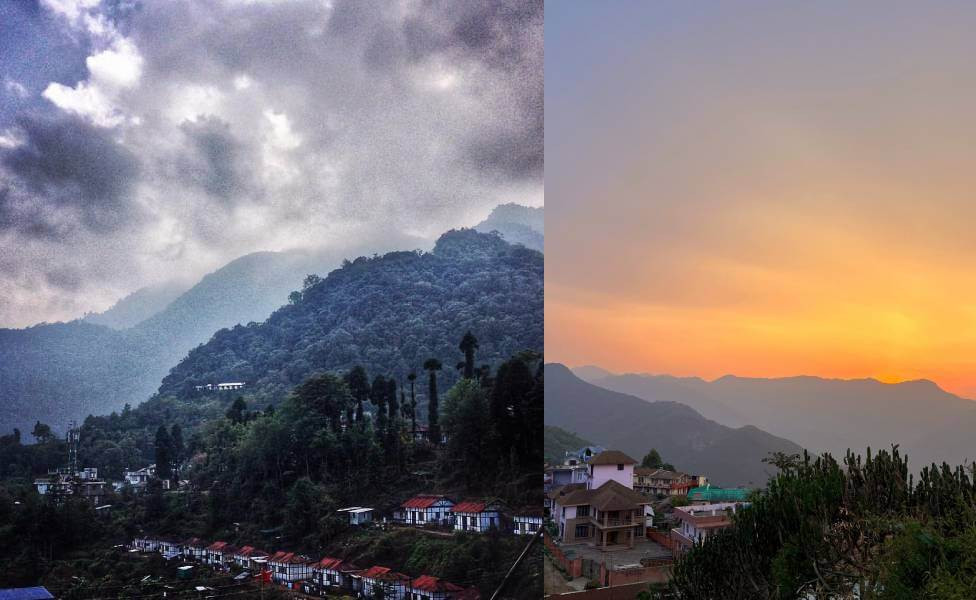 Jotsoma Village Kohima
Jotsoma Village Kohima
A remote village in Nagaland, offering a rich cultural experience and natural beauty. Activities include trekking, exploring tribal villages, and birdwatching. Stay at Hotel Japfu in Kohima. The nearest railhead is Dimapur, and the nearest airport is Dimapur Airport. Jotsoma’s commitment to sustainable tourism and preserving its cultural heritage makes it a unique eco-tourism destination, according to the Nagaland Tourism Department.
7.5. Namdapha National Park, Arunachal Pradesh
 Namdapha National Park
Namdapha National Park
One of India’s largest national parks, known for housing four kinds of felines. Activities include wildlife spotting, birdwatching, and trekking. Stay at forest rest houses. The nearest railhead is Tinsukia Railway Station in Assam, and the nearest airport is Dibrugarh Airport in Assam. Namdapha’s diverse ecosystem and tribal communities make it a unique eco-tourism destination, according to the Arunachal Pradesh Forest Department.
SIXT.VN offers comprehensive travel packages to North East India, ensuring a seamless and responsible travel experience.
8. What Are The Unique Eco Tourism Spots In Himachal Pradesh?
Himachal Pradesh offers several unique eco-tourism spots that showcase the region’s natural beauty and commitment to sustainability:
8.1. Great Himalayan National Park
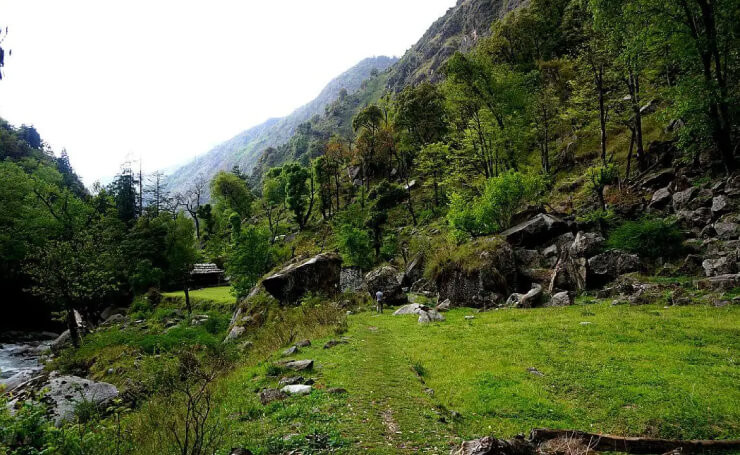 Great Himalayan National Park
Great Himalayan National Park
A UNESCO World Heritage Site with exceptional natural beauty and diverse flora and fauna. Activities include trekking, wildlife watching, and camping. Stay at the Community Training & Tourist Center in Sairopa. The nearest railhead is Joginder Nagar Railway Station, and the nearest airport is Kullu Manali Airport or Bhuntar Airport. The park’s conservation programs support local communities and preserve the region’s biodiversity, according to the Himachal Pradesh Forest Department.
8.2. Chail Sanctuary
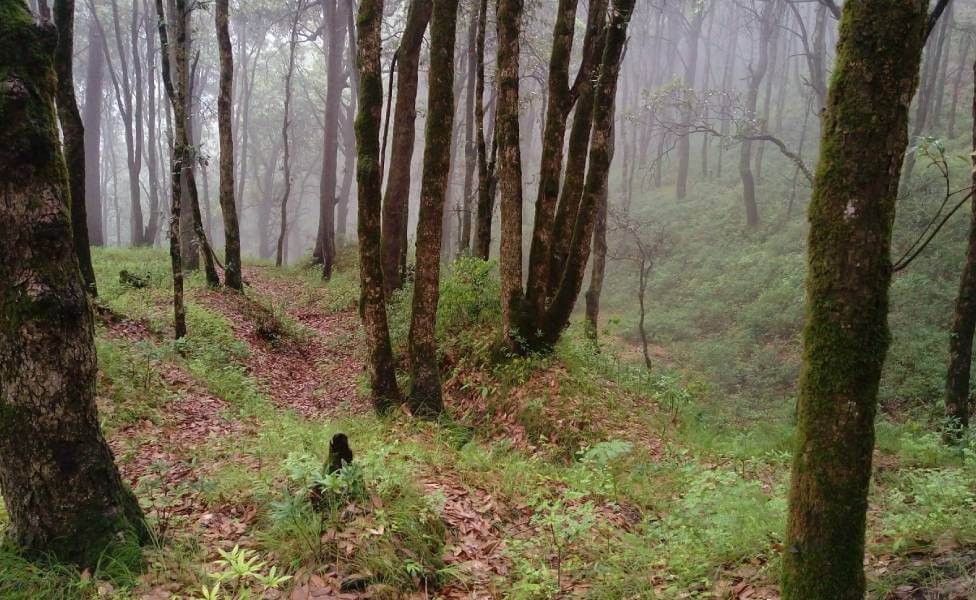 Chail Sanctuary Himachal
Chail Sanctuary Himachal
Known for its scenic beauty and rich biodiversity, offering dense forests and diverse wildlife. Activities include wildlife spotting, hiking, and birdwatching. Stay at Pahadi Zayka Homestay. The nearest railhead is Kalka Railway Station, and the nearest airport is Jubbarhatti Airport in Shimla. Chail Sanctuary’s eco-tourism initiatives have helped preserve its natural beauty and support local communities, according to the Himachal Pradesh Tourism Department.
SIXT.VN can arrange your travel and accommodations for an enriching eco-tourism experience in Himachal Pradesh.
9. How Can I Ensure My Trip To India Is Eco-Friendly?
To ensure your trip to India is eco-friendly, consider the following tips:
- Choose Sustainable Accommodations: Opt for eco-lodges, guesthouses, and hotels that follow sustainable practices.
- Support Local Businesses: Buy local products, eat at local restaurants, and hire local guides.
- Reduce Waste: Carry a reusable water bottle, avoid single-use plastics, and dispose of waste responsibly.
- Conserve Resources: Save water and electricity, and respect the natural environment.
- Travel Responsibly: Respect local customs, traditions, and wildlife.
According to a 2024 report by the Eco-Tourism Society of India, travelers who follow these practices can reduce their environmental impact by up to 50%. By making conscious choices, you can contribute to the sustainability of India’s eco-tourism destinations.
10. What Role Does SIXT.VN Play In Promoting Eco Tourism In India?
SIXT.VN plays a crucial role in promoting eco-tourism in India by providing seamless and sustainable travel solutions. We offer:
- Eco-Friendly Transportation: Providing options for hybrid and electric vehicles where available, reducing carbon emissions.
- Sustainable Accommodation Partnerships: Partnering with eco-lodges and hotels that follow sustainable practices.
- Responsible Tour Packages: Offering tour packages that prioritize conservation, support local communities, and minimize environmental impact.
- Travel Information and Resources: Providing travelers with information on eco-tourism destinations, sustainable travel tips, and responsible tourism practices.
By choosing SIXT.VN, you can ensure your trip to India is not only memorable but also contributes to the preservation of its natural and cultural heritage. Contact us at +84 986 244 358 or visit our website SIXT.VN to learn more about our eco-tourism offerings. Our address is 260 Cau Giay, Hanoi, Vietnam.
FAQ’s About Eco Tourism Destinations In India
1. What is the best time to visit eco-tourism destinations in India?
The best time to visit eco-tourism destinations in India varies depending on the region. Generally, the winter months (October to March) are ideal for most destinations, offering pleasant weather and optimal conditions for wildlife viewing and outdoor activities.
2. Are eco-tourism destinations in India safe for solo travelers?
Yes, many eco-tourism destinations in India are safe for solo travelers, particularly those with well-established tourism infrastructure and community-based initiatives. However, it’s always advisable to research and take necessary precautions, such as informing someone of your travel plans and avoiding remote areas after dark.
3. How can I book eco-friendly accommodations in India?
You can book eco-friendly accommodations in India by looking for certifications like LEED or Green Key, checking for sustainable practices (e.g., waste reduction, water conservation), and reading reviews from other travelers. Websites like Booking.com and TripAdvisor often list eco-friendly options.
4. What are some essential items to pack for an eco-tourism trip in India?
Essential items to pack for an eco-tourism trip in India include reusable water bottles, biodegradable toiletries, insect repellent, sunscreen, comfortable walking shoes, lightweight and breathable clothing, and a first-aid kit.
5. Are there any cultural etiquette tips I should be aware of when visiting eco-tourism destinations in India?
Yes, it’s important to respect local customs and traditions when visiting eco-tourism destinations in India. Dress modestly, remove your shoes before entering religious sites, ask for permission before taking photographs of people, and be mindful of local customs regarding food and dining.
6. What kind of wildlife can I expect to see in Indian eco-tourism destinations?
The wildlife you can expect to see varies depending on the destination, but common sightings include tigers, elephants, rhinos, leopards, various species of deer, monkeys, and a wide array of bird species.
7. How can I support local communities when visiting eco-tourism spots in India?
You can support local communities by staying in locally-owned accommodations, buying handicrafts and souvenirs directly from artisans, eating at local restaurants, and participating in community-based tourism activities.
8. What are the environmental impacts of traditional tourism versus eco-tourism in India?
Traditional tourism often leads to environmental degradation through pollution, waste generation, and depletion of natural resources. Eco-tourism, on the other hand, aims to minimize these impacts by promoting sustainable practices, conservation efforts, and responsible travel behavior.
9. Can I volunteer in eco-tourism projects in India?
Yes, there are numerous opportunities to volunteer in eco-tourism projects in India, ranging from wildlife conservation and reforestation to community development and sustainable agriculture. Organizations like World Wildlife Fund (WWF) and local NGOs often offer volunteer programs.
10. What certifications should I look for when choosing an eco-tourism operator in India?
When choosing an eco-tourism operator in India, look for certifications like those from the Eco-Tourism Society of India (ESOI), which indicate that the operator follows sustainable practices and contributes to local conservation efforts.



